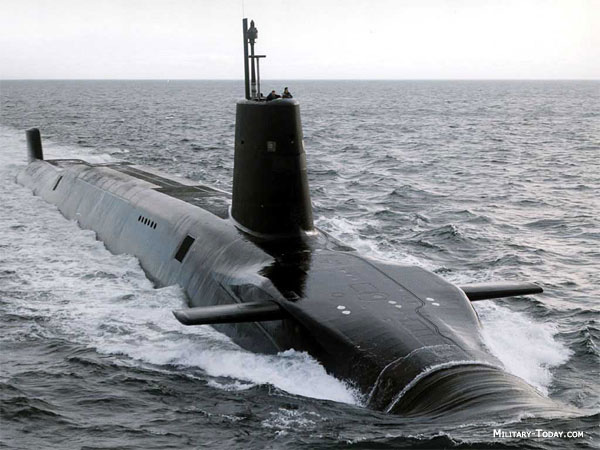Nuclear Sub and Irish Sea ferry in near miss highlights dangers
The near miss between a Ro Ro Ferry and a nuclear submarine in the North Channel highlights once again the danger posed by dived submarine operations in navigational choke points such as the North Channel and Pembroke Strait.
Since nuclear submarine operations began in earnest from the Clyde the transit route down the west of the Irish Sea using the Beaufort Trench has been an attractive one for submarines. The comparatively high undersea noise levels from natural and man-made seismic activity plus vessel noise in the confines of the Irish Sea make it a natural deployment route especially to escape the attention of vessels from the ‘opposition’ now of course Russia but previously the Warsaw Pact.
Russian submarines in particular want to latch on to ballistic missile subs in transit to their patrol area as was demonstrated by a recently declassified CIA document that highlighted a near collision between a Russian and US submarine just thirty miles from Glasgow over four decades ago..
Surface craft are also prone to incident not least because submarines will attempt to conceal their undersea ‘signature’ by sailing near to or in concert with surface craft.
It's unclear if the latest incident involved a ballistic missile or a hunter killer type submarine but they are both huge compared to the type of conventional submarines previously operated.
The incident because it involves a UK (RN) submarine will be thoroughly investigated. The British Navy does not like the embarrassment these incidents pose as they demonstrated with the enquiry into the grounding of HMS Astute of Skye some years ago. Thought is a believed that these submarines are hugely sophisticated with state of the art electronic aids the Astute incident demonstrated deficiencies the vessel had no WECDIS (Warship Electronic Chart Display Information Display) fitted.
The Celtic League called almost thirty years ago for International action via the IMO to regulate submarine activity and our campaign in the 1980s led to the International Maritime Organisation introducing a code (covering MFVs) which was further toughened after the fatal loss of the MFV Antares on the Clyde.
The issue of surface transit in ‘navigational choke points’ should however be revisited by the IMO even if it may have difficulty getting some of the submarine operating powers to see its merits.
Links.
The latest incident:
https://stv.tv/…/1434802-nuclear-submarine-in-near-miss-w…/…
https://www.bbc.co.uk/…/uk-scotland-tayside-central-46954212
HMS Astute enquiry 2010
https://www.gov.uk/…/service-inquiry-report-into-the-ground…
MFV Antares tragedy 1990
https://www.gov.uk/…/collision-between-pelagic-trawler-anta…
MFV Karen collision 2015
https://www.gov.uk/…/collision-between-the-stern-trawler-ka…
IMO resolution A 709 (17) (revoked resolution A599 adopted in 1987 when the Celtic League campaign was ongoing. Unfortunately it only cover MFVs and should be revisited:
http://www.imo.org/…/I…/Assembly/Documents/A.709%2817%29.pdf
BBC documentary about submarine activity in the Irish Sea and the dangers posed:
https://www.youtube.com/watch?v=4P_dMuAR-D8&feature=youtu.be
The UK and RNs own code which includes a map of some of the areas of concentrated activity:
https://assets.publishing.service.gov.uk/…/282352/mgn012.pdf
Image: RN Vanguard Class ballistic missile submarine - the vessels displace 16,000 tonnes and are 150 metres in length.
Bernard Moffatt
Celtic League Military Monitoring







